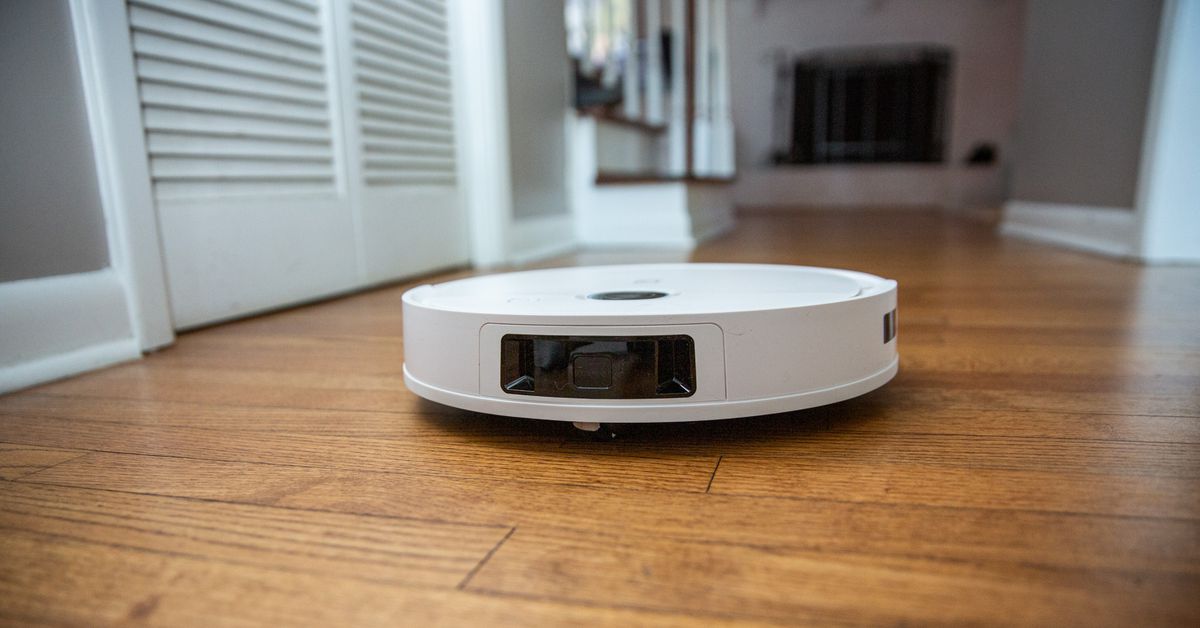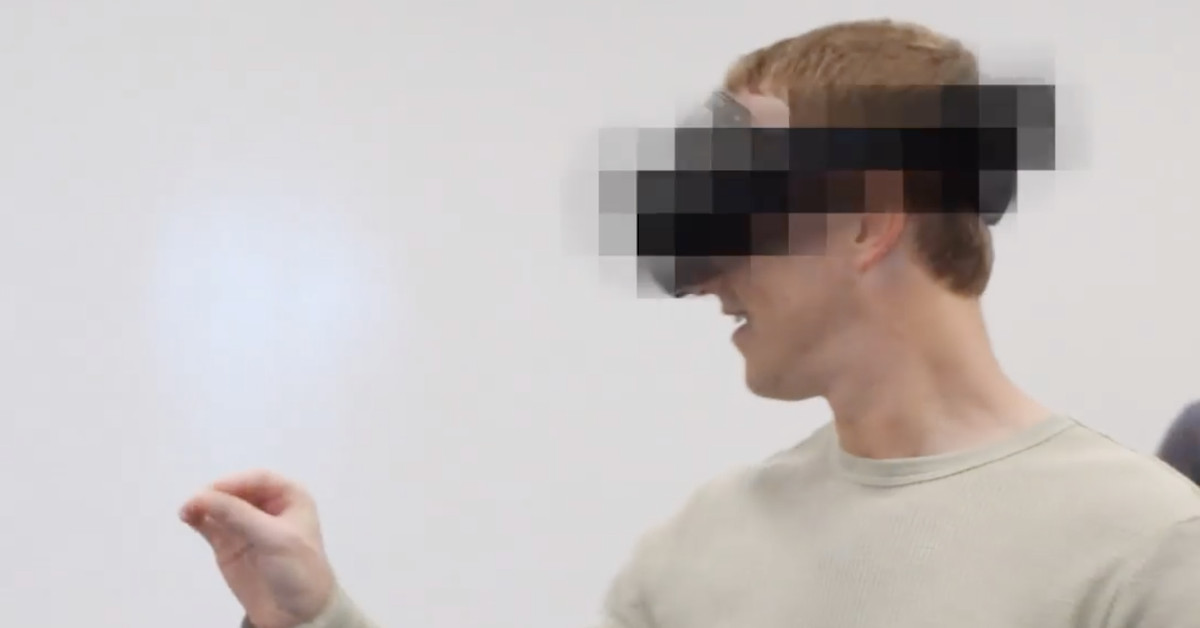
If you like the idea of a robot that can clean and mop your floors but dislike having to clean up before it runs and really dislike those $800 price tags, budget vac maker Yeedi has a bot for you. The new $449.99 Yeedi Vac 2 Pro can vacuum and mop simultaneously using an oscillating mopping system that actually scrubs. It also intelligently avoids mopping your carpets and has 3D obstacle avoidance, so it can get through the job without being derailed by a pair of shoes.
Available starting today, the Yeedi Vac 2 Pro launches alongside the $349 Yeedi Vac 2, which also has obstacle detection but just a standard mopping system with no carpet avoidance, although it does have a larger water tank. Both models have 3,000Pa suction power and can work with Yeedi’s auto-empty bin ($199.99), but the Pro has longer battery life.
I’ve spent a week or so with the Yeedi Vac 2 Pro, and while it does a good job at vacuuming and mopping and avoiding obstacles, it still costs $450. Throw in the auto-empty base, and you’re up to $650. For that amount of money, you can buy a Roomba i3 Plus (iRobot’s $550 midrange auto-empty bot that doesn’t mop) and have some cash left over to buy a decent manual mop. While the Yeedi is a good robot with some high-end features for a lower price, it’s not cheap enough or smart enough to really disrupt the big boys.
I have used and like Yeedi’s very budget robots, such as the $179.99 Yeedi K650. It does a simple job well. There’s no obstacle avoidance or room-specific cleaning, but it has a huge bin, and it really sucks up the dirt as it bumps and rolls around your house. By jumping up into the robot vacuum arena where smart mapping, obstacle avoidance, and oscillating mopping are playing, the Yeedi Vac 2 Pro is punching above its weight, and while it holds its own on the hardware front, the mapping/software experience is lackluster.
The best feature of the new Yeedi is its oscillating mopping action, meaning it scrubs your floors rather than just wiping them. And this worked well, leaving my floors much cleaner than most standard robot vac mops (not as clean as the Roborock S7, but that’s $200 more). But it has a cheap-feeling, thin scrap of a mopping pad that doesn’t seem like it will stand up to more than a couple of washes and doesn’t come with any extra pads (you can buy replacements for $20 for a three-pack). Also, the water reservoir only holds 180mL, so you need to refill it on every run.
:no_upscale()/cdn.vox-cdn.com/uploads/chorus_asset/file/23454088/jtuohy_220508_5208_0007.jpg)
:no_upscale()/cdn.vox-cdn.com/uploads/chorus_asset/file/23454084/jtuohy_220508_5208_0003.jpg)
While the Yeedi can now auto-avoid carpeted areas when mopping and increase suction as it goes over rugs in vacuum-only mode, this is a standard feature on a lot of mopping vacs today. You also have to remove the mopping tank if you want to vacuum your carpets as it can’t vacuum them with its mop on. It’s not a big chore but does mean you are less likely to use the mopping feature regularly if you have a lot of rugs or carpets you also want to keep clean. Higher-end options like the Roborock S7 have found a way to address this, by lifting the mop when going over carpet. The Roborock also uses this feature to air dry the mop while charging, with the Yeedi you have to remove it after every mopping run.
The Yeedi vacuum has an impressive 3000Pa of suction power and a big 5,200mAh battery that promises over three hours runtime, easily on par with most top-of-the-line models. But it never ran for more than 85 minutes in testing and often returned with a low battery. The Yeedi did a good job of cleaning my house in neat, methodical rows, carefully navigating around objects without banging into things, and covering most of my floor. Although it did occasionally skip large areas for no obvious reason.
:no_upscale()/cdn.vox-cdn.com/uploads/chorus_asset/file/23454089/jtuohy_220508_5208_0008.jpg)
This is probably due to its navigation and mapping tech. Most high-end robot vacuums use lidar-based SLAM mapping, deploying a more precise laser tech to determine where your rooms are. Yeedi uses a camera on top of the robot for navigation, which is a cheaper technology and much less precise. This visual SLAM mapping failed to properly identify the rooms in my house, struggling to see the wider doorways.
The robot could only find two rooms in my five-room, 800-square-foot downstairs area, and that was after two tries. After its first mapping run, it was convinced I lived in one giant room. But even without specific rooms, I could create digital keep-out zones, areas I don’t want the robot to go to, which are another basic necessity on any decent robot vacuum these days. You can only have one map at the moment, but Yeedi says multi-floor mapping is coming.
:no_upscale()/cdn.vox-cdn.com/uploads/chorus_asset/file/23455580/Screenshot_20220512_092208.png)
Yeedi did recently push a software update that added the ability to divide and merge rooms on the map, so I was able to manually create rooms and use the room-specific cleaning features. However, its navigation smarts failed it a few times, with the robot missing an entire room a couple of times and ending the cleaning job before it had reached everywhere.
Obstacle avoidance is also less effective compared to more expensive competitors deploying AI-powered avoidance tech. The robot uses 3D structured light technology to detect items that are over an inch tall, so floor mats, cables, pencils, and your kitty’s little accident won’t be avoided. It does do well at avoiding bigger items, such as a pair of shoes or a school backpack left in the hall, but pencils, headphones, cables, and socks all tripped it up.
The Yeedi is good at navigating around things, maneuvering through chair legs and over thick rug tassels with no trouble. In fact, it’s one of the only bot vacs I’ve tested that figured its way out of my lounge chair trap (skinny flat lounger feet next to an ottoman with skinny flat feet). I could hear its motor getting louder and quieter as it navigated its way around the problem like it was thinking really hard, finally freeing itself after a few minutes. All this means while you don’t have to tidy up as much if you want to make sure the robot finishes its run, you can’t be totally carefree about it all.
The Yeedi Vac 2 Pro works with Yeedi’s self-empty station for emptying the bin, an add-on I highly recommend for anyone considering a robot vacuum. It’s no fun dumping dust out of those tiny bins, and with a self-empty station, the robot can empty its own bin into a bag that Yeedi says will hold about 30 days of dust (replacement bags costs $17 for three). You just pull out the self-sealing bag and dispose of it easily without getting dust everywhere. But for an extra $200, this makes the Yeedi Vac 2 Pro a lot more expensive.
The Yeedi’s auto-empty station worked fine in testing, it didn’t get clogged and effectively emptied the 420mL bin onboard the bot on most attempts (I had to help it out once because the bin was really full). Be warned, it is a very loud process that goes on for about 20 seconds. Unlike a couple of higher-end mop / vac robots, the Yeedi auto-empty station is for dust only; it can’t empty or refill the mop reservoir. You’ll need to do that yourself before and after every mopping session.
:no_upscale()/cdn.vox-cdn.com/uploads/chorus_asset/file/23454083/jtuohy_220508_5208_0002.jpg)
Yeedi’s app has seen a lot of improvements since I first tested it a couple of years ago when it was rather flaky. But it still has its moments including slow loading and poor grammar in some areas. But the main features you want are there — room-specific cleaning (if it can find your rooms), clean zones, and the option to set a cleaning sequence (go to the kitchen first, then the living room, then the dining room, and so on), set schedules for the robot, and adjust the cleaning levels.
There are four vacuum suction levels — and the robot is super quiet on the lowest setting — plus three water-flow levels for the mop (I always use the highest setting for the best clean). You can turn on continuous cleaning so that it will go back to its base and recharge if it needs to finish a job; plus, there’s a handy Do Not Disturb setting.
The Yeedi Vac 2 Pro ticks all the right boxes — but some of its features, such as mapping, just aren’t as well-executed as those on the Roborocks and iRobots of this space. That’s not a big surprise as this is a budget bot, and for $200 less than the nearest comparable competitor, the Roborock S7, it might suit you fine.
If you do step up to the Roborock (which has sonic mopping, lidar mapping, and standard obstacle avoidance), your robot can vacuum and mop your floors and vacuum your carpets, all in one go. If you can dispense with robot mopping, the Roomba i3 is $100 cheaper and delivers a better clean and significantly better app / ecosystem experience, but it doesn’t have obstacle avoidance. Ecovacs has several remarkably similar options at various price points, but, as I noted in my review of its flagship robot vacuum, its mapping also suffers from accuracy issues. However, if you have a budget of $450 for a robot vacuum, really want a mop that can scrub and won’t get stuck, and don’t care about super-accurate mapping, the Yeedi Vac 2 Pro will get the job done.
Photos by Jenifer Pattison Tuohy / The Verge






